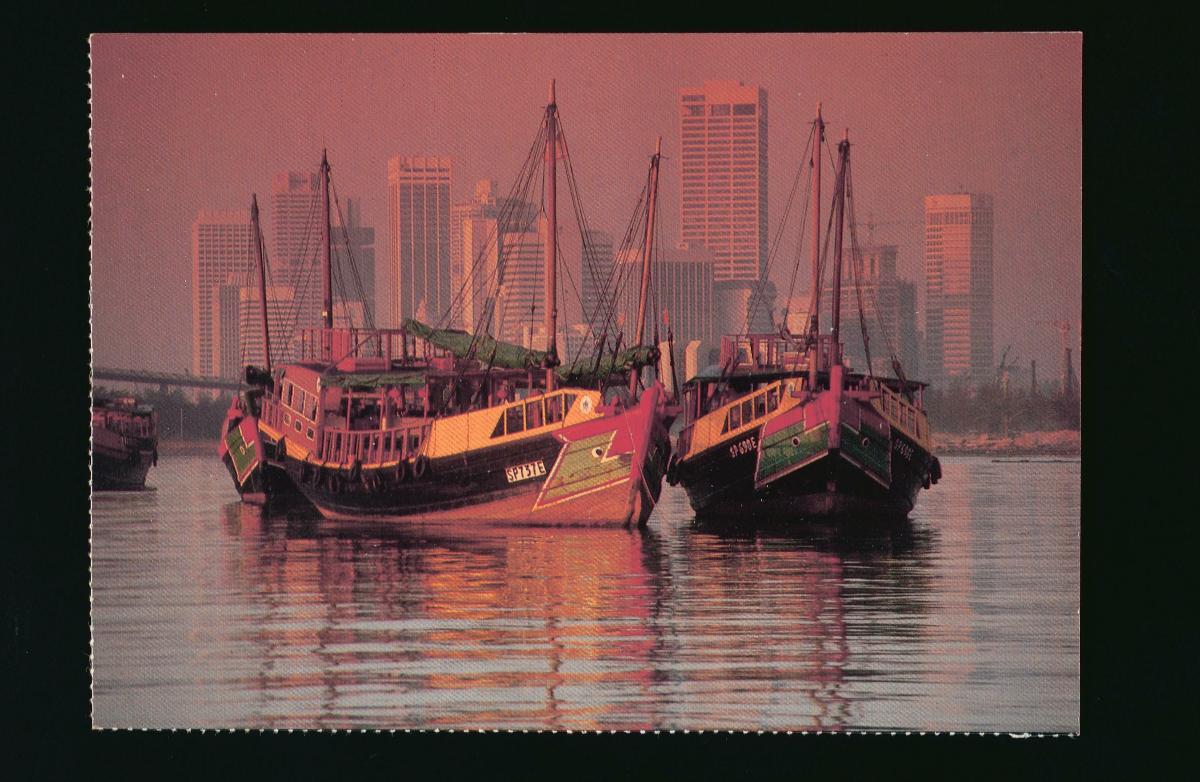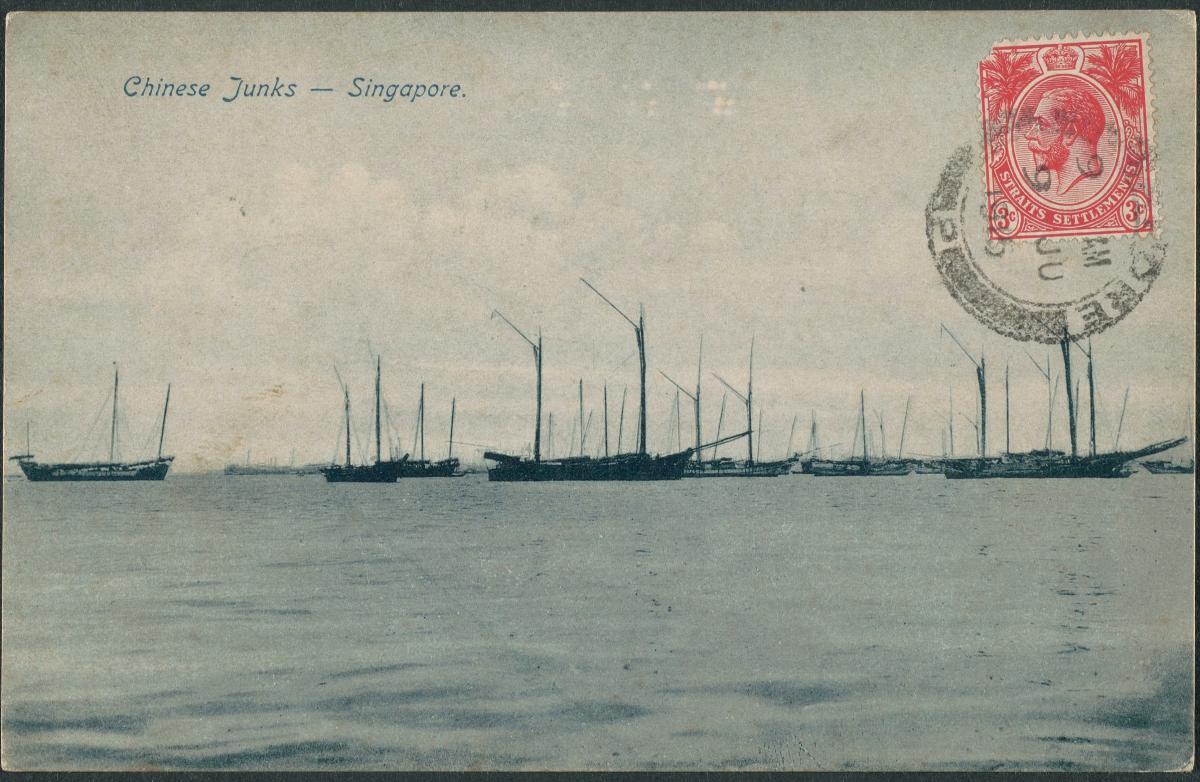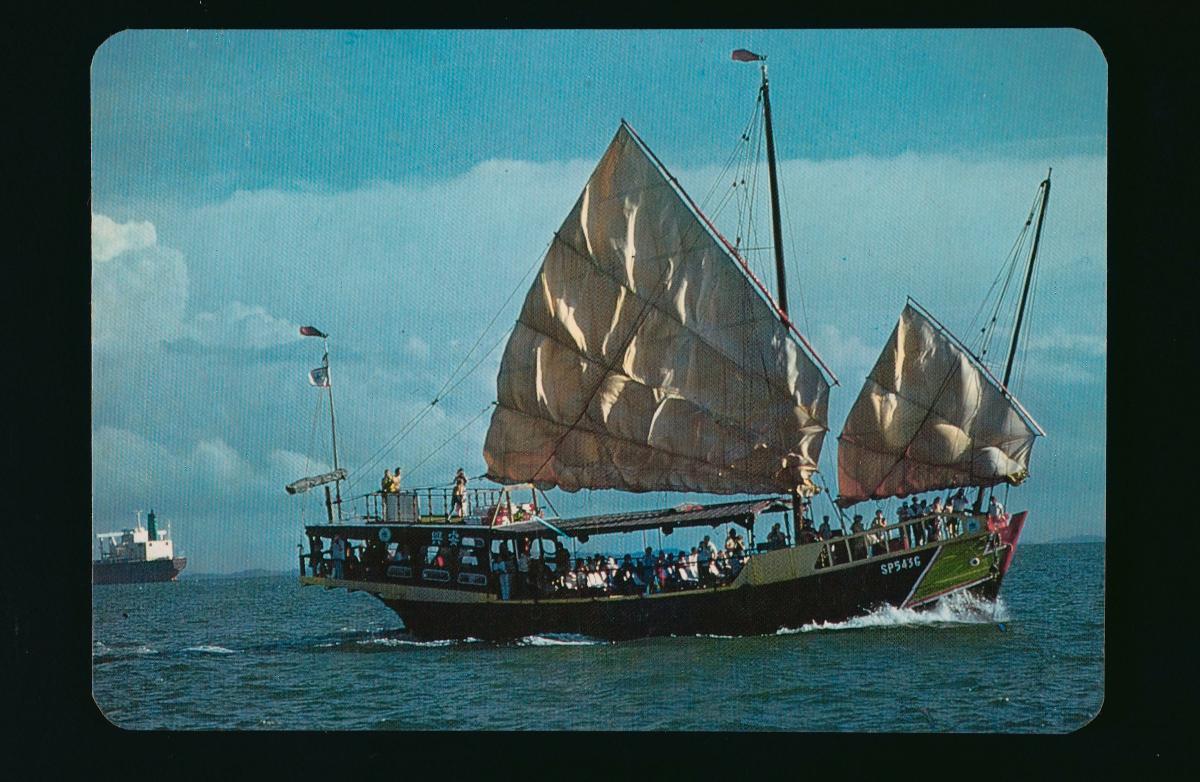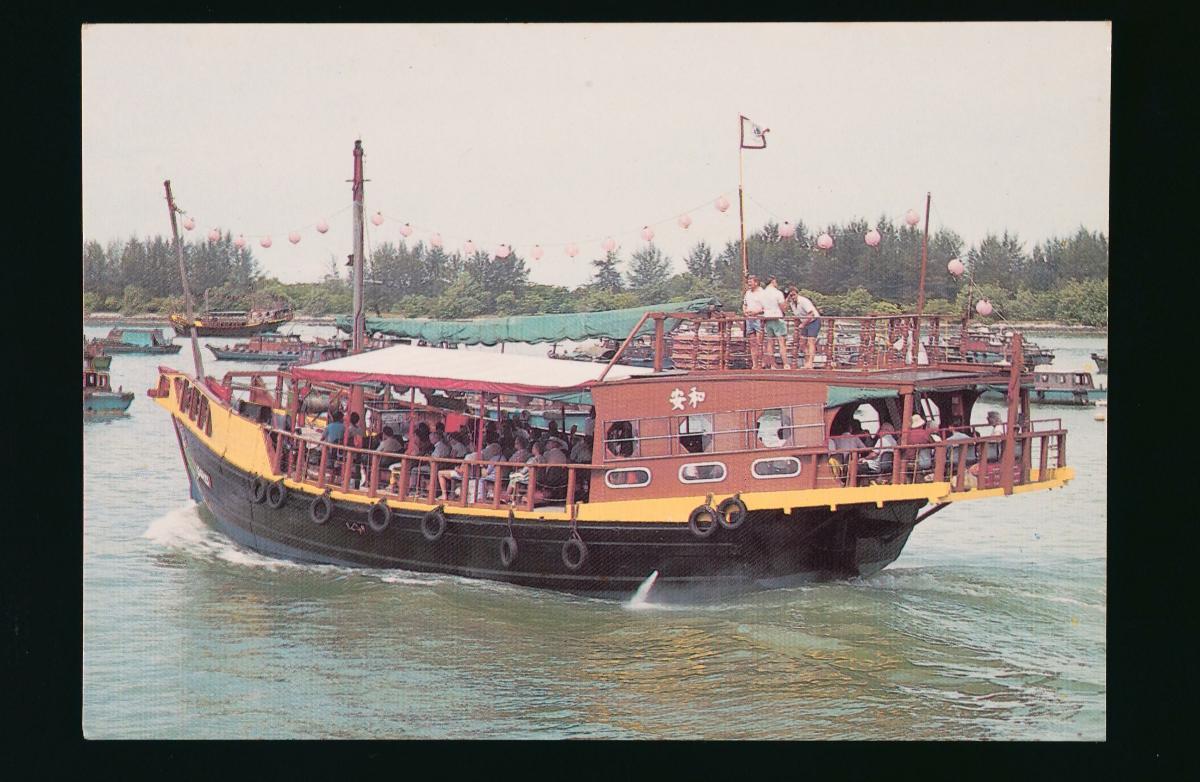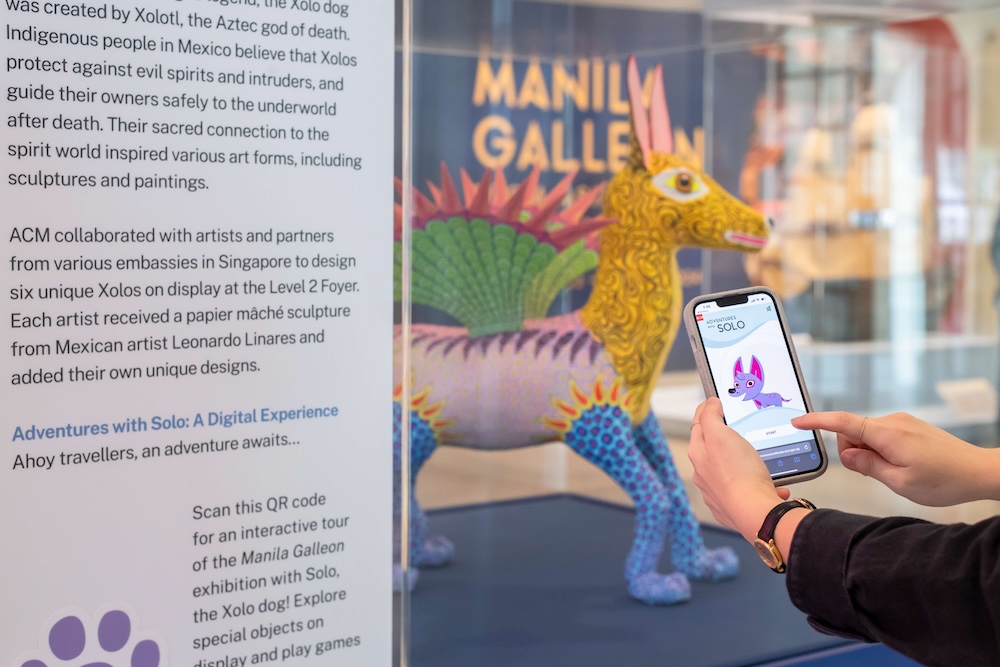This postcard shows two motorised Chinese junks, refurbished to ferry tourists, anchored in Singapore Harbour.Right up to the middle of the 19th century, the bulk of Chinese maritime trade with Singapore and Southeast Asia in general was carried out using ocean-going merchant vessels referred to by Europeans as ‘junks’. The etymological roots of the term can be traced back to the Javanese ‘jong’ or the Malay ‘ajong’, both meaning 'a ship or large vessel'. The Chinese junk differs from its Western sail counterparts in many areas, such as the fore-and-aft method of rigging, use of mat sails and bamboo stays, a rounded and keel-less hull, bulkhead construction and distinctively Chinese decorative motifs. Asian traders, especially the Siamese, favoured the use of junks for conducting trade with China as these vessels were accorded favourable levies and access rights in Chinese ports. However, such privileges were also extended to Western vessels from the 1840s onwards through various treaties concluded between the Western powers and the Qing regime. The loss of such preferential treatment, coupled with the technological advantages enjoyed by Western square-rigged sail ships and steamers led to the gradually decline in the use of Chinese junks for the intra-Asian trade. Nevertheless, these versatile vessels continued to operate in Southeast Asian waters well into the 20th century, albeit in limited numbers.




